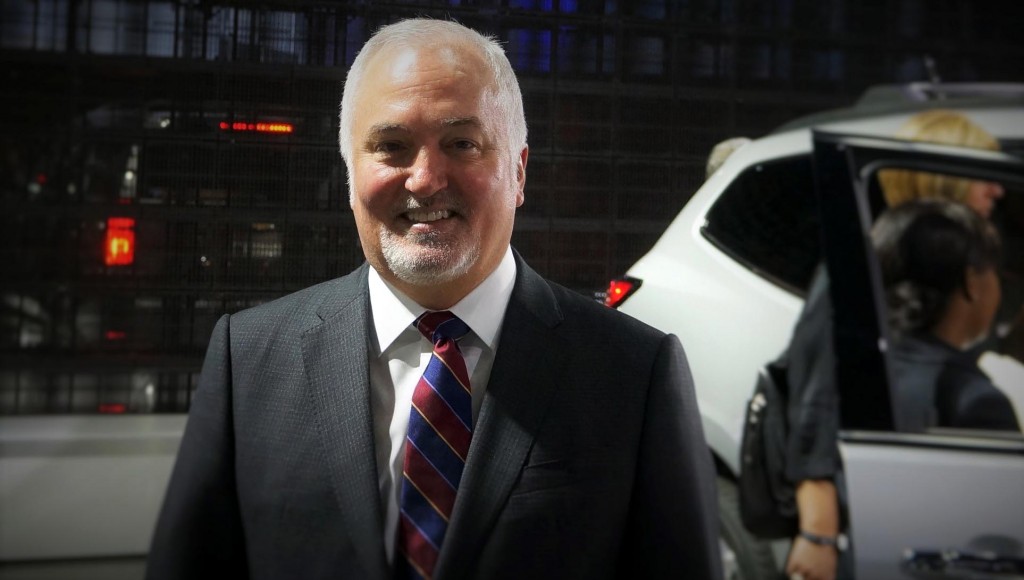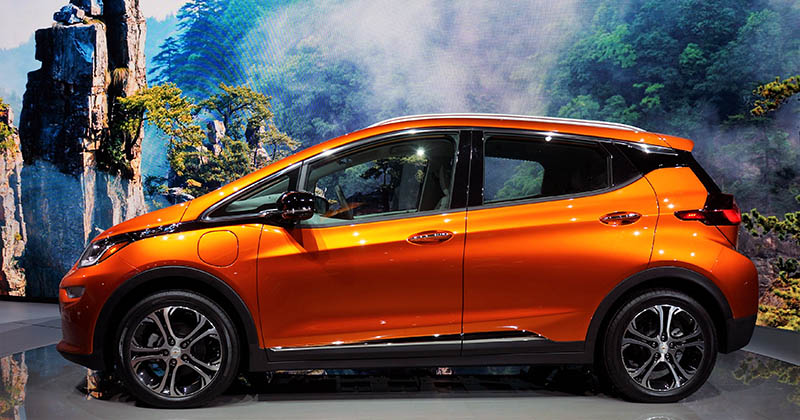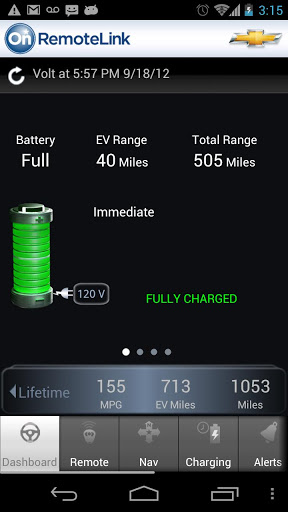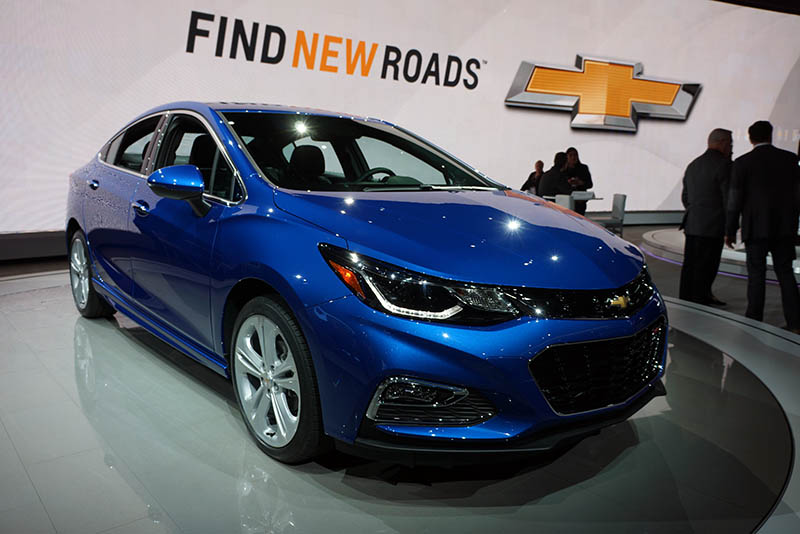
General Motors Canada President and Managing Director Steve Carlisle at the 2016 Detroit Auto Show
Text and photos by Gadjo Cardenas Sevilla
“We’re at a transformational point in the automotive industry and there’s a transformational point in Canada as well,” General Motors Canada President and Managing Director Steve Carlisle says as he walks me through Chevrolet’s large and vehicle filled pavilion at the 2016 North American International Auto Show in Detroit, Michigan.
General Motors, produces vehicles in 37 countries and has 13 brands ranging from high performance and high-end Cadillac and Buick vehicles to a range of crossover and family vehicles under GMC and Chevrolet. The company is at the forefront of an industry-wide race to develop next-generation solutions which include viable and affordable electric vehicles and the necessary supporting infrastructure.
GM investing heavily in the future of transportation

The 2017 Chevy Bolt EV promises 320 kilometer full-electric range and comes to Canada later this year
There’s also heavy investment in future technologies such as autonomous driving vehicles, Internet-connected cars as well as a huge US $500 million investment in Lyft, which is Uber’s biggest competitor. GM also launched Maven, a personal mobility brand to be in the thick of the popular ride-on-demand app-focused services that are proliferating around the world.
“The product in technology that we are bringing to market this year is particularly exciting. We have five product launches here in the Detroit Auto Show that are relevant to Canada.” Carlisle explains. The North American International Auto Show, which played host to over 208,327 visitors during its opening weekend and hosted over 50 new car and concept launches, is a great place to get things started and while GM’s most talked about EV release was launched previously at the International Consumer Electronics Show in Las Vegas, it is being shown to the mainstream automotive press in Detroit.
“We have the Chevy Cruze Hatchback which is a huge opportunity in Canada. On the technology side we showed the 2017 Chevy Bolt EV, a 320 kilometer full electric range vehicle with all the conversations we’re having about greenhouse gas and CO2 reduction, a big component of that has to be a shift over time to EVs,” Carlisle points out, both of the Chevrolet vehicles will be made available in Canada this year.
The Chevy Bolt EV, like many recent models from GM, also highlights all the latest connected car features like the ability to offer Apple CarPlay or Android Auto connectivity with smartphones, Bluetooth low-energy which allows communication between a driver’s smartphone and the Bolt. “So that your smartphone starts to become your encrypted keys to the Bolt and offer access to car sharing scenarios. That’s engineering work that’s done in Oshawa, Ontario,” Carlisle points out. “We can be the best place in the world to do this engineering.”
Ontario engineering and technology for the world

GM uses Bluetooth low-energy to allow their vehicles to communicate with drivers via their smartphones
“We produce more STEM (Science Technology Engineering and Math) graduates in Ontario than in the state of California,” Carlisle says. “Apple, Microsoft, Google recruit heavily from Ontario to take them to California.”
“What we will start to see given our new mandate for engineering of connected cars in Oshawa is more content going to our global products. Any engineering work that we do in Canada has the ability to show up in 9 or 10 million vehicles a year around the world.”
Aside from engineering connected car technology, a lot of autonomous driving testing as well as battery technology development takes place in various locations around Canada.
Talking about the Chevy Bolt EV, I asked Carlisle if there were plans to take pre-orders for the vehicle, something that EV leader Tesla has done for its electric cars (mostly because Tesla needed the finances to help build the vehicles).
“It’s a little early to do that, but we’ll likely start talking about pricing and how to order in the Summer.” What is remarkable is that GM was able to turn the Chevrolet Bolt EV from a mere concept a year ago to a production vehicle given a short span of time.
“It will be first and most in terms of EV range,” Carlisle notes and while Canadian pricing was not specifically discussed, the aim is to make the Bolt EV the most attractive to the widest range of consumers.
EVs need the support of a viable charger infrastructure
When asked if the infrastructure in Canada is improving to help support the inevitable arrival of Electric Vehicles, Carlisle says,” It is and we’re greatly encouraged by the announcement of the Ontario Government around a month ago regarding a large investment in charging infrastructure.”
The Ontario government is planning to spend $20 million to build a network of public charging stations for electric vehicles.

The 2016 Chevrolet Volt is a plug-in hybrid that has an electric motor as well as a gasoline engine to counter Canada’s lack of charger infrastructure on public roads
One of the biggest issues facing hybrid and EV drivers is range anxiety, or the fear that they will run out of charge before getting to a charging station.
“Having 320 kilometers of range is one way to overcome range anxiety,” Carlisle says, “another way is to have convenient charging. We need to work with other parties and partners to make this happen.”
“In Canada, we’re going to spend 125 billion dollars on infrastructure, can’t we spend that with a view of the world as it will be or as we want it to be. Multi-modal, connected, electric, shared autonomous. We would spend that money differently and maybe it won’t cost a lot more but we can properly position ourselves for the future,” Carlisle says.



